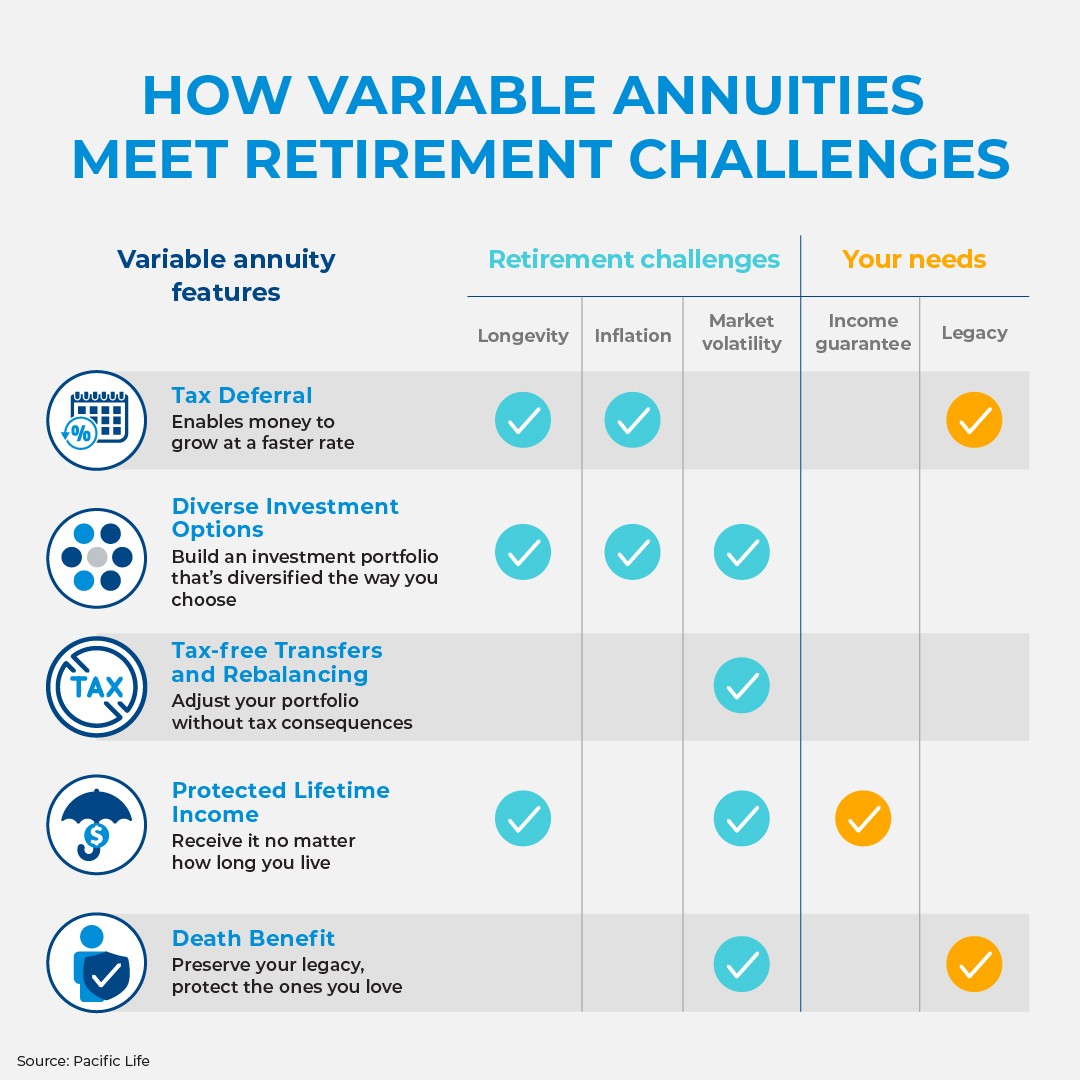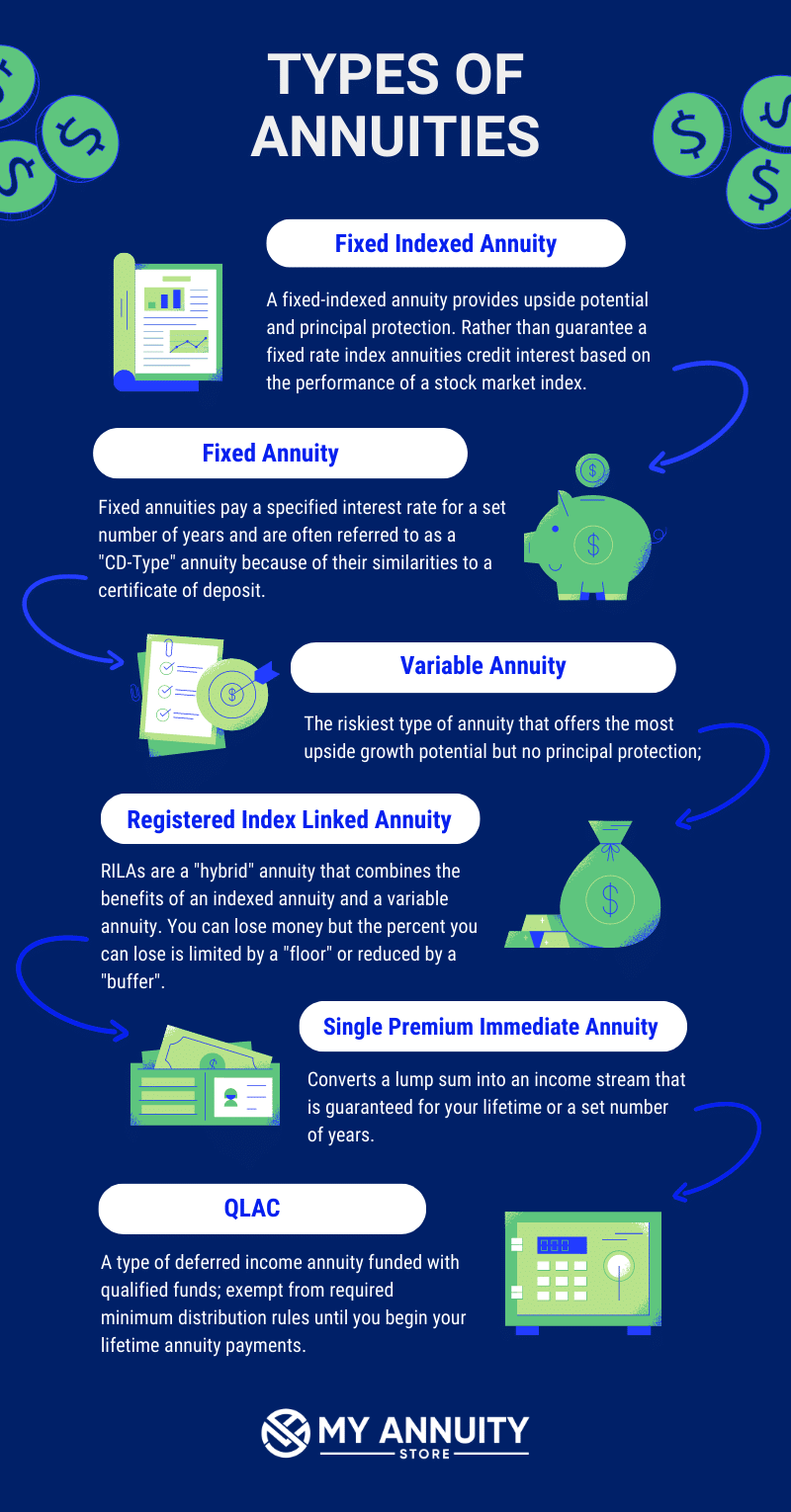All Categories
Featured
Table of Contents
The payment may be spent for growth for an extended period of timea single premium deferred annuityor invested momentarily, after which payment beginsa single premium instant annuity. Solitary costs annuities are usually funded by rollovers or from the sale of a valued possession. A flexible premium annuity is an annuity that is intended to be funded by a series of repayments.
Proprietors of repaired annuities know at the time of their acquisition what the worth of the future capital will be that are created by the annuity. Obviously, the variety of cash money circulations can not be understood ahead of time (as this depends upon the contract owner's lifespan), but the ensured, repaired rate of interest at the very least offers the owner some level of certainty of future income from the annuity.
While this distinction appears simple and uncomplicated, it can considerably influence the worth that an agreement owner inevitably obtains from his or her annuity, and it produces substantial unpredictability for the contract owner - Annuities for retirement income. It additionally usually has a material effect on the degree of fees that an agreement owner pays to the releasing insurance policy business
Fixed annuities are typically made use of by older investors that have restricted properties yet that wish to balance out the risk of outliving their possessions. Fixed annuities can work as an efficient tool for this function, though not without certain drawbacks. In the situation of prompt annuities, as soon as a contract has actually been bought, the contract owner gives up any kind of and all control over the annuity properties.
Breaking Down Fixed Interest Annuity Vs Variable Investment Annuity A Closer Look at How Retirement Planning Works Breaking Down the Basics of Annuity Fixed Vs Variable Benefits of Choosing the Right Financial Plan Why Fixed Vs Variable Annuities Is a Smart Choice How to Compare Different Investment Plans: Explained in Detail Key Differences Between Fixed Interest Annuity Vs Variable Investment Annuity Understanding the Key Features of Variable Annuity Vs Fixed Annuity Who Should Consider Annuities Fixed Vs Variable? Tips for Choosing Fixed Vs Variable Annuity Pros Cons FAQs About Fixed Vs Variable Annuities Common Mistakes to Avoid When Choosing What Is A Variable Annuity Vs A Fixed Annuity Financial Planning Simplified: Understanding Your Options A Beginner’s Guide to Smart Investment Decisions A Closer Look at How to Build a Retirement Plan
For instance, an agreement with a regular 10-year surrender duration would charge a 10% surrender fee if the contract was surrendered in the first year, a 9% surrender charge in the 2nd year, and so on up until the abandonment fee reaches 0% in the contract's 11th year. Some deferred annuity agreements have language that enables small withdrawals to be made at various periods during the surrender duration without fine, though these allocations normally come at a price in the type of reduced guaranteed rates of interest.
Just as with a repaired annuity, the proprietor of a variable annuity pays an insurance firm a swelling sum or collection of settlements in exchange for the guarantee of a series of future settlements in return. As pointed out above, while a dealt with annuity expands at an ensured, constant rate, a variable annuity expands at a variable price that depends upon the efficiency of the underlying investments, called sub-accounts.
Throughout the build-up stage, assets spent in variable annuity sub-accounts expand on a tax-deferred basis and are tired only when the contract proprietor withdraws those incomes from the account. After the build-up phase comes the income stage. With time, variable annuity properties need to theoretically increase in value till the contract proprietor chooses he or she would certainly like to begin withdrawing cash from the account.
One of the most significant concern that variable annuities usually existing is high expense. Variable annuities have a number of layers of charges and expenditures that can, in aggregate, create a drag of approximately 3-4% of the contract's value yearly. Below are one of the most usual charges related to variable annuities. This expense compensates the insurance firm for the risk that it thinks under the terms of the agreement.
M&E expenditure costs are computed as a percent of the agreement worth Annuity providers hand down recordkeeping and other management expenses to the contract proprietor. This can be in the form of a level annual charge or a percentage of the contract value. Administrative fees may be consisted of as part of the M&E risk charge or might be assessed individually.
These costs can range from 0.1% for passive funds to 1.5% or even more for actively handled funds. Annuity agreements can be customized in a number of means to offer the particular demands of the contract owner. Some typical variable annuity cyclists include guaranteed minimal buildup advantage (GMAB), ensured minimum withdrawal advantage (GMWB), and assured minimal earnings advantage (GMIB).
Decoding How Investment Plans Work A Comprehensive Guide to Annuity Fixed Vs Variable Breaking Down the Basics of Annuity Fixed Vs Variable Benefits of Choosing the Right Financial Plan Why Choosing the Right Financial Strategy Is Worth Considering Fixed Annuity Or Variable Annuity: How It Works Key Differences Between Different Financial Strategies Understanding the Risks of Variable Vs Fixed Annuities Who Should Consider Strategic Financial Planning? Tips for Choosing the Best Investment Strategy FAQs About Annuities Fixed Vs Variable Common Mistakes to Avoid When Planning Your Retirement Financial Planning Simplified: Understanding Fixed Income Annuity Vs Variable Annuity A Beginner’s Guide to Smart Investment Decisions A Closer Look at Fixed Income Annuity Vs Variable Annuity
Variable annuity payments give no such tax obligation reduction. Variable annuities tend to be very inefficient lorries for passing wide range to the future generation because they do not appreciate a cost-basis change when the original agreement proprietor passes away. When the owner of a taxed investment account dies, the expense bases of the financial investments kept in the account are changed to mirror the market prices of those investments at the time of the owner's death.
Heirs can inherit a taxable investment profile with a "clean slate" from a tax viewpoint. Such is not the case with variable annuities. Investments held within a variable annuity do not obtain a cost-basis change when the original owner of the annuity dies. This implies that any type of built up latent gains will be handed down to the annuity owner's successors, together with the linked tax problem.

One significant problem associated to variable annuities is the capacity for conflicts of interest that may feed on the component of annuity salesmen. Unlike a monetary expert, that has a fiduciary duty to make financial investment decisions that profit the client, an insurance coverage broker has no such fiduciary commitment. Annuity sales are highly lucrative for the insurance coverage professionals that sell them due to high in advance sales commissions.
Lots of variable annuity contracts include language which positions a cap on the portion of gain that can be experienced by specific sub-accounts. These caps avoid the annuity owner from completely joining a portion of gains that can otherwise be appreciated in years in which markets produce substantial returns. From an outsider's perspective, it would appear that financiers are trading a cap on investment returns for the abovementioned ensured floor on financial investment returns.
Highlighting the Key Features of Long-Term Investments Everything You Need to Know About Fixed Income Annuity Vs Variable Annuity Defining the Right Financial Strategy Advantages and Disadvantages of Fixed Income Annuity Vs Variable Annuity Why Choosing the Right Financial Strategy Is a Smart Choice What Is Variable Annuity Vs Fixed Annuity: Simplified Key Differences Between Different Financial Strategies Understanding the Rewards of Fixed Income Annuity Vs Variable Growth Annuity Who Should Consider Strategic Financial Planning? Tips for Choosing Fixed Index Annuity Vs Variable Annuity FAQs About Deferred Annuity Vs Variable Annuity Common Mistakes to Avoid When Choosing Deferred Annuity Vs Variable Annuity Financial Planning Simplified: Understanding Choosing Between Fixed Annuity And Variable Annuity A Beginner’s Guide to Smart Investment Decisions A Closer Look at Fixed Vs Variable Annuity Pros Cons
As noted above, surrender fees can seriously limit an annuity owner's capability to move possessions out of an annuity in the very early years of the contract. Even more, while the majority of variable annuities enable contract proprietors to withdraw a defined amount throughout the build-up phase, withdrawals beyond this amount generally cause a company-imposed fee.
Withdrawals made from a fixed passion price investment choice might likewise experience a "market worth adjustment" or MVA. An MVA changes the worth of the withdrawal to show any adjustments in rate of interest from the moment that the cash was purchased the fixed-rate option to the moment that it was withdrawn.

Fairly often, even the salesmen who market them do not completely recognize just how they function, and so salesmen in some cases victimize a buyer's feelings to market variable annuities instead of the advantages and viability of the products themselves. Our team believe that investors ought to fully understand what they have and just how much they are paying to have it.
Nevertheless, the exact same can not be said for variable annuity possessions kept in fixed-rate financial investments. These properties lawfully come from the insurance firm and would consequently go to threat if the business were to stop working. Any type of warranties that the insurance policy firm has agreed to provide, such as an ensured minimal earnings benefit, would certainly be in concern in the occasion of a service failing.
Analyzing Strategic Retirement Planning A Closer Look at Indexed Annuity Vs Fixed Annuity What Is Fixed Annuity Or Variable Annuity? Pros and Cons of Various Financial Options Why Annuity Fixed Vs Variable Is Worth Considering How to Compare Different Investment Plans: A Complete Overview Key Differences Between Different Financial Strategies Understanding the Risks of Long-Term Investments Who Should Consider Strategic Financial Planning? Tips for Choosing the Best Investment Strategy FAQs About Variable Annuities Vs Fixed Annuities Common Mistakes to Avoid When Choosing a Financial Strategy Financial Planning Simplified: Understanding Your Options A Beginner’s Guide to Fixed Vs Variable Annuity A Closer Look at How to Build a Retirement Plan
Possible buyers of variable annuities must understand and consider the financial problem of the issuing insurance coverage company prior to getting in into an annuity contract. While the advantages and downsides of different sorts of annuities can be questioned, the actual concern surrounding annuities is that of suitability. In other words, the question is: who should possess a variable annuity? This concern can be hard to answer, offered the myriad variations available in the variable annuity world, but there are some standard guidelines that can help capitalists determine whether annuities should contribute in their monetary strategies.
As the stating goes: "Buyer beware!" This article is prepared by Pekin Hardy Strauss, Inc. ("Pekin Hardy," dba Pekin Hardy Strauss Riches Management) for educational objectives only and is not meant as a deal or solicitation for service. The information and information in this article does not constitute legal, tax obligation, bookkeeping, investment, or other professional recommendations.
Table of Contents
Latest Posts
Exploring Fixed Annuity Or Variable Annuity A Comprehensive Guide to Investment Choices Breaking Down the Basics of Investment Plans Benefits of Fixed Index Annuity Vs Variable Annuity Why Annuities V
Analyzing Strategic Retirement Planning A Comprehensive Guide to Investment Choices What Is Variable Annuity Vs Fixed Annuity? Benefits of Choosing the Right Financial Plan Why Choosing the Right Fina
Understanding Financial Strategies A Closer Look at Fixed Annuity Or Variable Annuity Breaking Down the Basics of Fixed Index Annuity Vs Variable Annuity Features of Smart Investment Choices Why Choos
More
Latest Posts